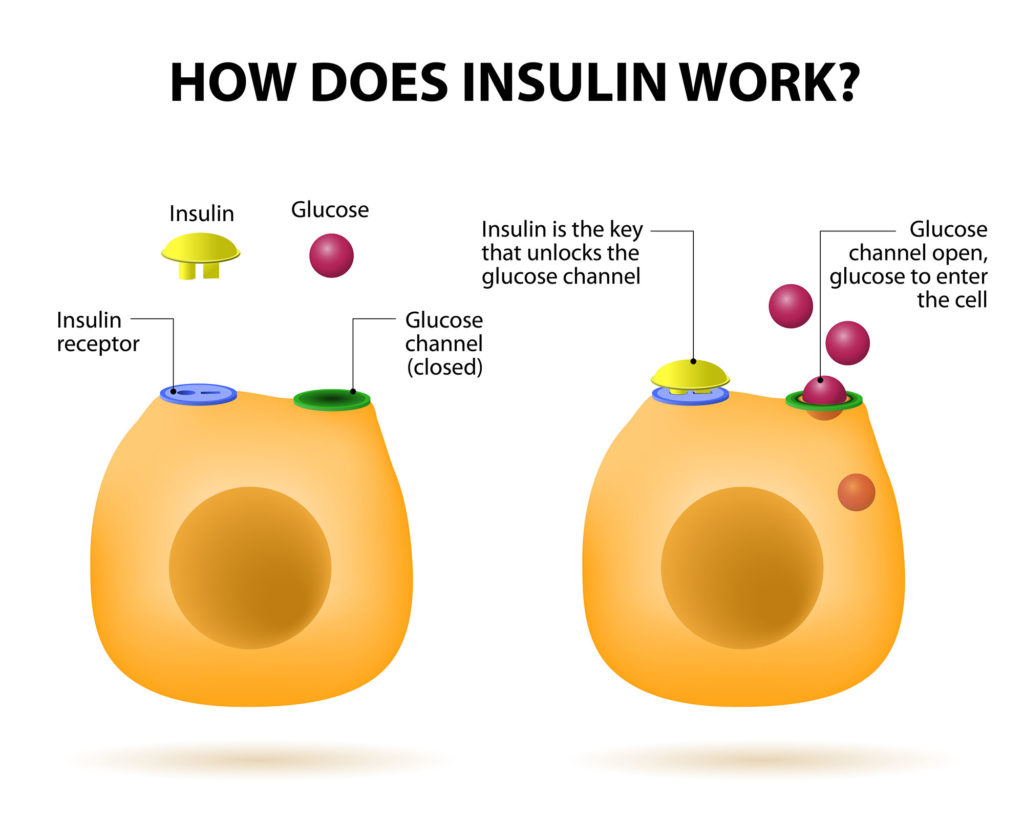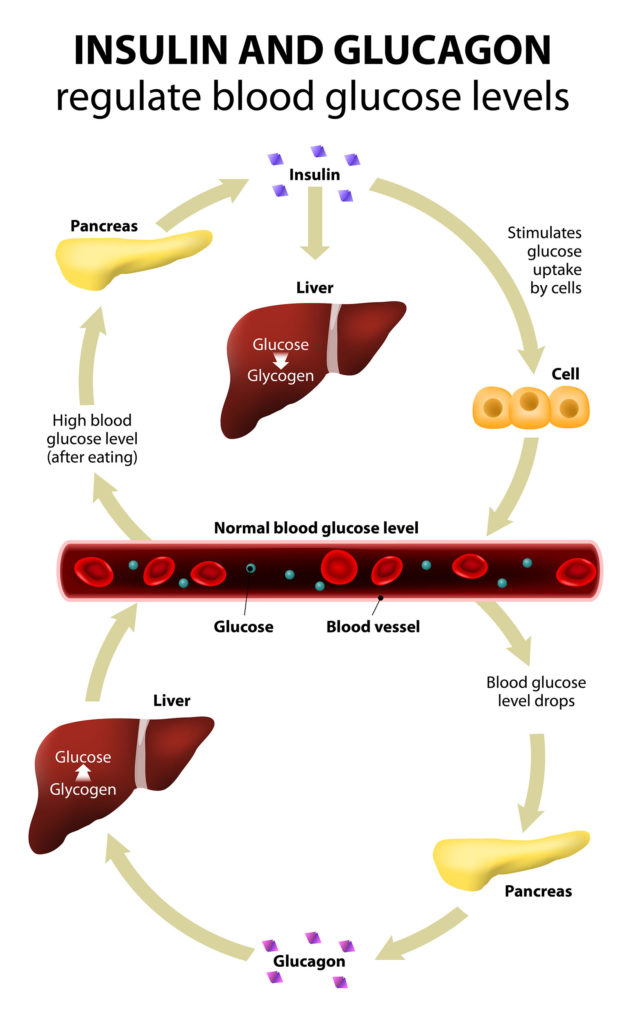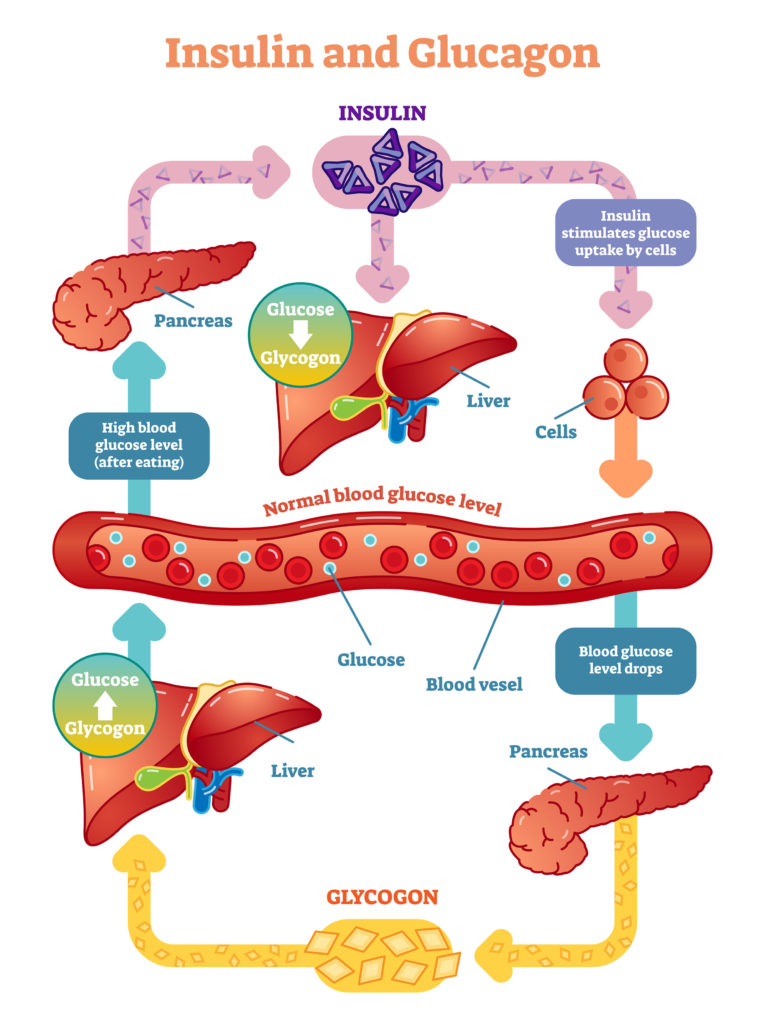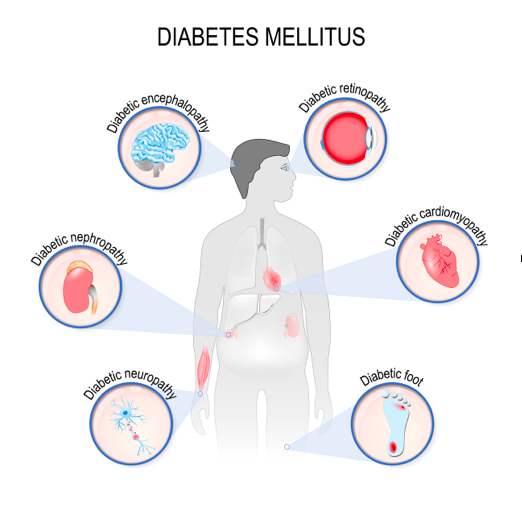
Diabetes

Diabetes Objectives
-
Outline how insulin and glucagon from the pancreas regulate blood sugar.
-
Distinguish between type I, type II, and gestational diabetes, including the significance of diet and other risk factors.
-
Describe the impact of diabetes on organs throughout the body.

In the endocrine system guide, an example of hormones working opposite each other were calcitonin and parathyroid hormone balancing blood calcium.
The pancreas produces two hormones that balance blood glucose: ___ and ___.
This video shows how insulin and glucagon levels change in response to a rise in blood glucose right after a big meal, or a slight drop in blood glucose long after a meal.

Soon after a meal, the pancreas releases ___ that binds to receptors on muscle and liver cells. These cells take glucose out to the blood and store it as ___.

Long after a meal, the pancreas releases ___, which targets different receptors and causes ___ to be released back into the blood.
To make sure this makes sense, draw a sketch of blood glucose regulation when glucose levels would be rising after a big meal, and again when glucose would be falling long after a meal. Include: pancreas, liver/skeletal muscle, insulin, glucagon, glucose, glycogen.
Insulin and glucagon are working opposite each other to maintain relative balance, also called h__________.

The pancreas is serving two distinct functions: producing enzymes for digestion and hormones for blood sugar regulation. The differences in tissues is apparent under the microscope.
Diabetes is a set of diseases that relates to insulin. This video provides an overview of the types of diabetes and risk factors.
Diseases like diabetes can have numerous symptoms, indicating that multiple organ systems may be impacted.


Limitations and dramatic fluctuations in blood sugar can impact tissues throughout the body.
Difficulty in managing blood sugar levels can result in both short-term and long-term impacts on the body.

Management of diabetes is a balance of diet, exercise, stress reduction, and medication.
Dietary choices can reduce the risk of large fluctuations in blood sugar.
The next section introduces considerations associated with the end of adult lives, as well as the importance of ethics in science, including medical research.

Check your knowledge. Can you:
-
outline how insulin and glucagon from the pancreas regulate blood sugar?
-
distinguish between type I, type II, and gestational diabetes, including the significance of diet and other risk factors?
-
describe the impact of diabetes on organs throughout the body?






